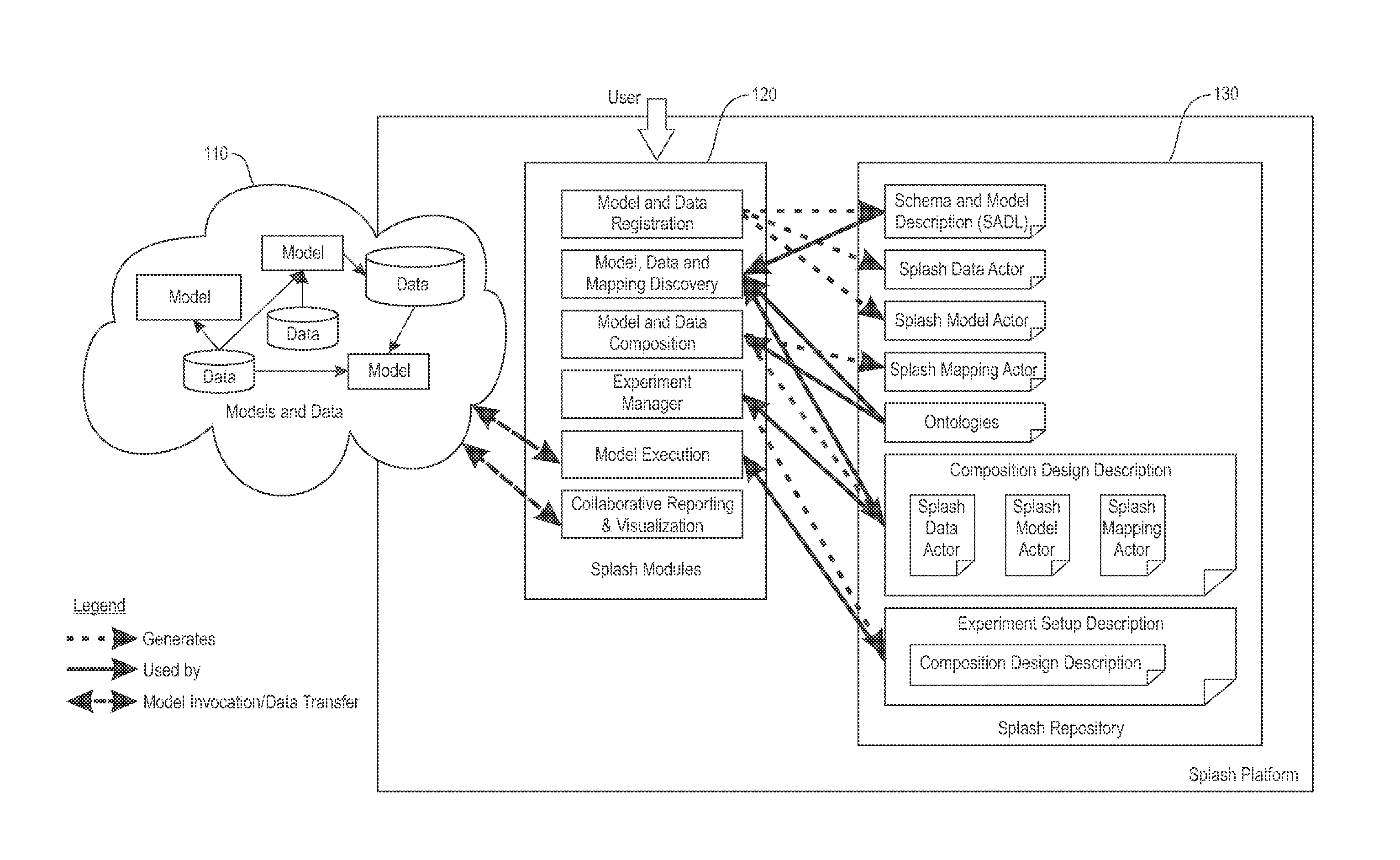Synchronization of time between different simulation models
a technology of synchronizing time and simulation models, applied in the field of simulation modeling, can solve problems such as complicated planning of such modeling and analysis
- Summary
- Abstract
- Description
- Claims
- Application Information
AI Technical Summary
Benefits of technology
Problems solved by technology
Method used
Image
Examples
case 1
[0063]Aggregation-since-start: First consider measurements that represent the SUM of some quantity since the start of the measurement period, e.g., the start of the simulation. The window for a target time ti is:
Wio(sj,dj),(sj+1,dj+1)
As
[0064]before, j=max{n:sn≦ti}, so that sj≦tij+1. The alignment function sets
d~i=dj+(dj+1-dj)ti-sjsj+1-sj.(1)
[0065]To estimate the AVERAGE of some quantity since the start of measurement, use the same window but with the following alignment function:
d~i=1ti[Dj+(Dj+1-Dj)ti-sjsi+1-si],
[0066]This formula is obtained by multiplying each pertinent cumulative-average data point di in the source by si to convert it to a cumulative sum, then applying (1) to estimate the cumulative sum at time ti, and finally converting this cumulative sum to a cumulative average via division by ti.
case 2
[0067]Aggregation-since-last: when the source measurements represent the SUM since the last (source) tick, the estimation formulas become more complicated. The window is
Wi=(sj,dj),(sj+1,dj+1), . . . ,(sj+k,dj+k)[0068]where j=max{n:sn≦ti−1} and k=min{n:sj+n≧ti}. Thus sj is the greatest source time point less than or equal to ti−1 and sn+k is the smallest source time point greater than or equal to to; see FIG. 6. For 1≦i≦nt, the alignment formula is then
d~i={sj+1-ti-1sj+1-sjdj+1+∑n=j+2j+k-1dn+ti-sj+k-1sj+k-sj+k-1dj+kifk>1ti-ti-1sj+1-sjdj+1ifk=1.(2)
In this formula
∑abxi=0wheneverb<a
When the target time points are denser on the time axis than the source time points, use of the estimation formula (2) results in the allocation method discussed. Thus allocation can be viewed as a special case of aggregation. Recall that t0=0 by assumption. When i=0, the convention is adopted that
od0=d0 if t0=s0o
If, on the other hand:
s0<ot0<s1o, then {tilde over (d)}0o
is computed from (2), usin...
PUM
 Login to View More
Login to View More Abstract
Description
Claims
Application Information
 Login to View More
Login to View More - R&D
- Intellectual Property
- Life Sciences
- Materials
- Tech Scout
- Unparalleled Data Quality
- Higher Quality Content
- 60% Fewer Hallucinations
Browse by: Latest US Patents, China's latest patents, Technical Efficacy Thesaurus, Application Domain, Technology Topic, Popular Technical Reports.
© 2025 PatSnap. All rights reserved.Legal|Privacy policy|Modern Slavery Act Transparency Statement|Sitemap|About US| Contact US: help@patsnap.com



